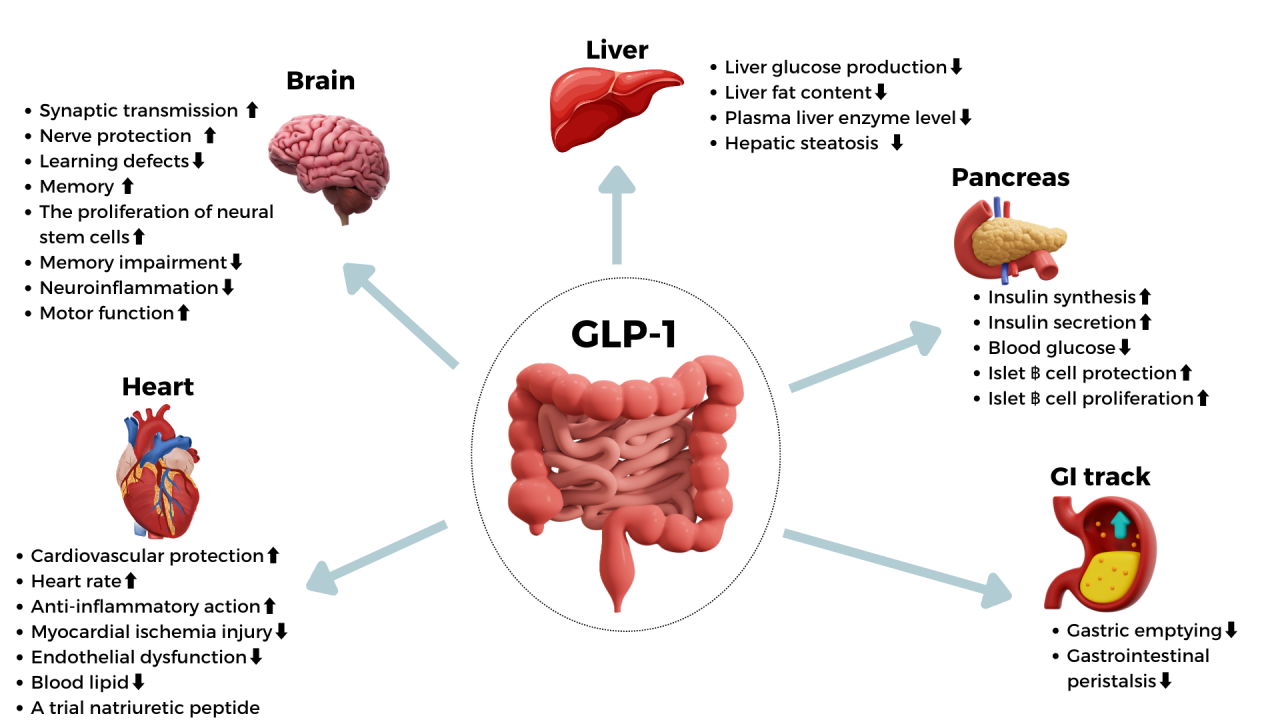
The Unstoppable Rise of GLP-1 Agonists: Revolutionising Diabetes and Obesity Treatment
Over the past two years, the pharmaceutical industry has witnessed an unprecedented surge in the development and deployment of GLP-1 receptor agonists. Originally designed to manage type 2 diabetes (T2D), these drugs have rapidly expanded their therapeutic reach, offering significant benefits for obesity, cardiovascular disease, and beyond. This rapid growth has positioned GLP-1 agonists as one of the most lucrative drug classes in history, with projections indicating a continued upward trajectory.
GLP-1 Receptor Agonists: A Brief Overview
GLP-1 receptor agonists mimic the action of the natural GLP-1 hormone, which plays a critical role in regulating blood glucose levels, slowing stomach emptying, and modulating hunger and satiety. These mechanisms make GLP-1 agonists particularly effective in managing T2D and promoting significant weight loss. The latter has become a major focus in recent years, driving their broader adoption for obesity treatment.
Market Dynamics and Growth Prospects
The dramatic weight loss results achieved with GLP-1 agonists—often between 15-25%—have spurred market growth, far surpassing the performance of earlier medications. This has translated into a booming market, with global sales estimated at around $40 billion in 2023. Analysts predict this figure could quadruple over the next decade, reaching or even exceeding $150 billion by the early 2030s, particularly as the drugs' therapeutic applications expand.
J.P. Morgan Research forecasts that the GLP-1 market will surpass $100 billion by 2030, with obesity treatments contributing over $40 billion. Similarly, GlobalData projects the GLP-1 drugs market across major markets to grow from $31.3 billion in 2023 to $125.1 billion by 2033, at a compound annual growth rate (CAGR) of 14.9%. The potential for even greater market volumes exists if ongoing clinical trials confirm the positive effects of GLP-1 agonists on cardiovascular diseases and other conditions like sleep apnea.
The Manufacturing Challenge
Despite the promising revenue forecasts, the GLP-1 market faces a significant bottleneck: manufacturing capacity. As demand outpaces supply, shortages have been reported, particularly in Europe, where the European Medicines Agency (EMA) does not anticipate resolution until beyond 2024. In the United States, efforts are underway to alleviate supply constraints, but manufacturing capacity remains a limiting factor.
In response, industry giants Novo Nordisk and Eli Lilly are making substantial investments to expand their production capabilities. Novo Nordisk, for example, has committed to a $6 billion investment in Denmark and an additional $2.3 billion in France. Eli Lilly, on the other hand, is increasing its manufacturing capacity with a $9 billion investment in Indiana and new facilities in Germany and Wisconsin.
The Role of CDMOs
Contract Development and Manufacturing Organisations (CDMOs) are poised to play a crucial role in addressing the supply-demand imbalance. As pharmaceutical companies race to scale up production, CDMOs are stepping in with additional sterile fill/finish capacity to meet the burgeoning demand for GLP-1 products. This collaboration between pharma giants and CDMOs could be pivotal in resolving the current supply constraints and ensuring that these life-changing medications reach all who need them.
Looking Ahead
The future of GLP-1 receptor agonists is incredibly promising. With their potential to revolutionise the treatment of T2D, obesity, and associated conditions, these drugs are set to become even more integral to global healthcare. As manufacturing capacity expands and new formulations and combination therapies enter the market, GLP-1 agonists could redefine the standard of care for millions worldwide.
In this dynamic and rapidly evolving landscape, continued innovation, strategic investments, and collaboration across the pharmaceutical industry will be key to unlocking the full potential of GLP-1 receptor agonists. The next decade promises to be transformative, with GLP-1 drugs leading the charge in a new era of therapeutic excellence.
Recipharm
Recipharm, as a leading global CDMO, is exceptionally positioned to support pharmaceutical companies navigating the growing demand for GLP-1 receptor agonists. With extensive expertise in sterile fill/finish operations and a robust track record in scaling production, Recipharm can offer the agility and capacity that pharmaceutical companies require to meet market needs efficiently. By partnering with Recipharm, companies can accelerate their time to market, ensure consistent supply, and focus on innovation while relying on a trusted partner to manage the complexities of manufacturing.